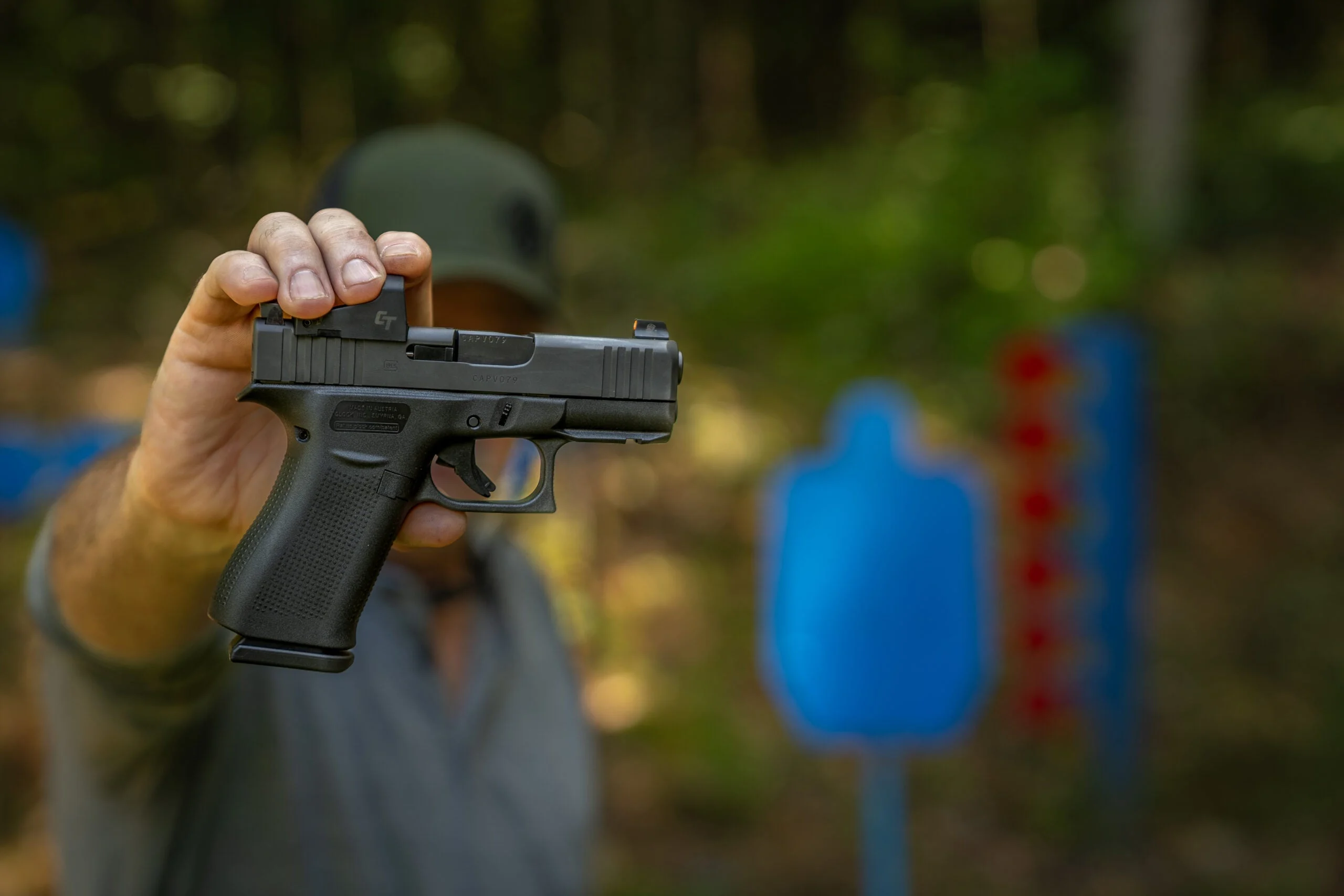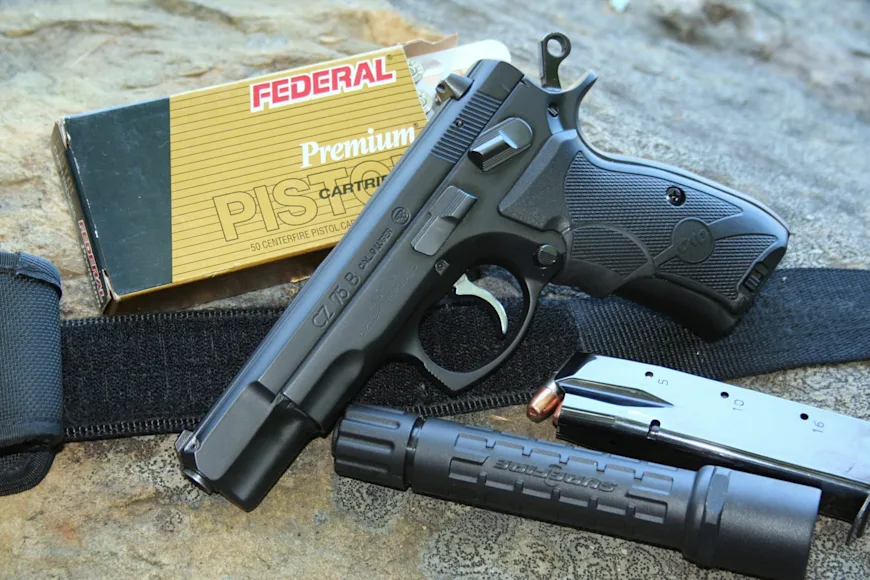We may earn revenue from the products available on this page and participate in affiliate programs. Learn more ›
When answering the question, “What is a double-action pistol?” all your attention should immediately turn to the trigger, because it is the trigger's function that determines whether you are looking at a single-action or double-action pistol. With single-action pistols, the trigger’s only function is to releases the hammer from a cocked position so it can strike the firing pin or primer to ignite the gunpowder inside the cartridge case. With double-action (DA) pistols, the trigger has two functions: It will release the hammer from the cocked position, and if the hammer is not cocked, pressing the trigger will cock and release the hammer. As simple as that might seem, there’s a bit more to it all.
What Is a Double-Action Pistol Trigger?

To understand what a DA pistol is, you first need a general understanding of handguns. There are two types: revolvers and pistols. A revolver is a handgun that has a cylinder with multiple chambers that rotate behind a barrel, whereas a pistol is any handgun with a chamber that’s part of the barrel. A pistol can have a bolt or a break-action, or it can be a semi-automatic. Both revolvers and pistols can be either single-action (SA) or double-action (DA), and the SA and DA identifiers are not so much about the handgun as they are, as mentioned, about trigger function.
When you insert a magazine inside an SA or DA pistol and cycle the slide to load a cartridge into the chamber and barrel, the slide cocks the hammer, and as the slide goes forward, the hammer remains cocked. Since the hammer is cocked after you load a DA pistol, what’s the point of a trigger that will also cock the hammer?
Well, it’s a safety thing. Because some—particularly in law enforcement—felt carrying a pistol with a cocked hammer and a light SA trigger pull was unsafe (even with the safety on), they wanted to carry the pistol with the hammer un-cocked. This required the not-so-safe practice of un-cocking the hammer manually, so the de-cocking lever was created. When you press a de-cocking lever on a DA pistol, the hammer falls forward but will not fire the pistol. Now, if you want to shoot the DA pistol you must either manually cock the hammer with your thumb or pull the DA trigger that cocks and releases the hammer.
In theory, this works perfectly. However, the distance and amount of force needed to press a DA trigger that will cock the hammer is much more than the amount of distance and force necessary to press a trigger to just releases the hammer from the cocked position. After firing, the slide of an SA or DA pistol cycles to eject the empty case and load a new cartridge, but it also cocks the hammer. This means that your first shot with a DA pistol—that’s de-cocked—will require a lot more trigger pressure and movement than subsequent shots. Trigger consistency is a big part of being able to shoot accurately, and a lot of shooters did not like the inconsistency between the first and subsequent shots with a DA pistol, and this is how the double-action-only (DAO) pistol came to be.
Related: Pistol vs Revolver: What's the Difference?
Double Action Only Pistols
Once you load a DAO pistol, pressing the trigger forces the hammer to the rear and then releases it to fire the pistol. But, unlike with a DA pistol, where the slide leaves the hammer cocked after is cycles, with the DAO pistol the hammer does not stay cocked, it follows the slide forward. In fact, the hammer of a DOA pistol never remains in the cocked position. The advantage of the DAO pistol is that the trigger press is the same for every shot because the trigger always cocks and releases the hammer. Interestingly, for a short time in the early 90s, Browning offered the BDM pistol, which was switchable from SA to DA, and even to DAO. It was a failure. Also, although DA and DAO pistols were once popular with law enforcement, that's no longer the case because of striker-fired pistols.
Striker-Fired Pistols

In a way, modern striker-fired pistols, like the Glock and the brand new Ruger RXM, are nothing more than highly refined DAO pistols. The primary difference is that striker-fired pistols do not have a hammer. Instead, they have a spring-loaded striker that’s partially cocked by the cycling of the slide and then released by the trigger. Like a DAO pistol, the trigger pull of a striker-fired pistol remains the same for every shot, but the force needed to press the trigger is less than with a DAO pistol, but a bit more than with a SA pistol.
Given the popularity and wide acceptance of striker-fired pistols, it’s unlikely DA or DAO pistols have much of a future. But you never know, the single-action 1911 pistol has been around for more than a century, and it’s more popular now than ever. A wholesale return to the SA pistol could possible be in our futre, or maybe a brand new pistol action. It seems safe to say, however, that the heyday of DA and DOA pistols is over.
Read Next: How to Hold a Pistol, the Right Way


